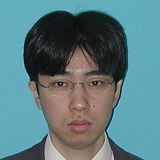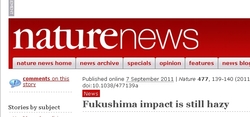Nature introduced a project to support the Fukushima region in which Dr Aida, Department of Computer Science and Engineering is participating
21 Sep 2011
 Associate Professor Shin Aida of the Department of Computer Science and Engineering has joined a project published as on line news in the British Science Magazine, Nature, to support the region affected by the disaster.
Associate Professor Shin Aida of the Department of Computer Science and Engineering has joined a project published as on line news in the British Science Magazine, Nature, to support the region affected by the disaster."Fukushima impact is still hazy" (Nature 477,139-140)
http://www.nature.com/news/2011/110907/full/477139a.html

Quote:
Some Japanese scientists have grown so frustrated with the slow official response that they have teamed up with citizens to collect data and begin clean-up. Because radiation levels can vary widely over small distances, the latest government maps are too coarse for practical use by local people, says Shin Aida, a computer scientist at Toyohashi University of Technology. Aida is proposing a more detailed map-making effort through 'participatory sensing'. Using the peer-to-peer support website 311HELP.com(http://311help.com) Aida plans to have people gather samples from their homes or farms and send them to a radiation measuring centre, where the results would be plotted on a map.
unquote
(Supplementary explanation by Asso.Prof. Aida)
When people actually gather samples, various information such as the latitude, longitude, photos of samples and sample IDs can be sent using a simple mobile phone application to a computer server for the on-line map-making. This is the meaning of 'participatory sensing' (participatory mapping).
HOPE-Japan: High-resolution Online-map Project for East-Japan
A high-resolution Online-map making project to confirm the extent of the spread of radioactive materials released due to the Great East Japan Earthquake
It was confirmed that sunflowers have absorbed caesium-137, released by the accident at the Fukushima Dai-ichi nuclear power plant, from the soil. Based on this, the 'HOPE-Japan' project will use the 'participatory sensing' method, which is frequently used in ICT(information communication technology), to make an actual map of the contaminated soil to assist in conducting an effective clean-up activity, regardless of the frameworks of industry, academia or government.



